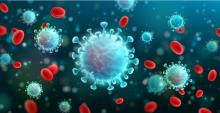Recent Publications
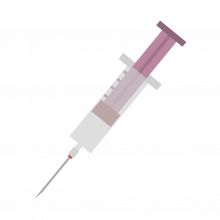
Samih Badarny: Long-term stable efficacy of botulinum toxin A in facial movement disorders with no need for increasing dose (Medicine (Baltimore) . )
Botulinum toxin A is considered an effective treatment for involuntary facial movements. We examined whether treatment efficacy maintained or changed over time with two products, Botox and Dysport, in patients with hemifacial spasm, facial synkinesis and benign essential blepharospasm.

Yaniv Hadi, Tsafrir Or, Gassan Moady, Shaul Atar: Psoriasis and Coronary Heart Disease - Not as Severe as Predicted (QJM . )
Psoriasis is a systemic disorder involved in several disease processes, including cancer, metabolic syndrome and cardiovascular disease (CVD). Previous studies showed that psoriasis is most likely an independent risk factor for CVD, yet the extent of its impact on CVD and the extent of coronary artery disease (CAD), remains unclear. We investigated the correlation of psoriasis to the severity of CAD in age and gender matched patients with CAD with and without psoriasis.

Michael V Joachim, Din Emm Richter, Aladdin Mohana, Musa Labeeb, Murad Abdelraziq, Imad Abu El-Naaj: Quality of Life After Class III Repair Orthognathic Surgery: Five-Year Retrospective Study (J Craniofac Surg .)
To evaluate the effect of orthognathic surgery on the long-term quality of life of patients with presurgical skeletal Class III and to identify its strongest effect-whether esthetic, social, or functional.
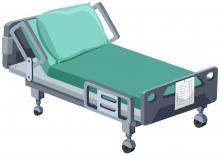
Khalaf Kridin: Immunological features and factors associated with mucocutaneous bullous pemphigoid - a retrospective cohort study (J Dtsch Dermatol Ges .)
The features of bullous pemphigoid (BP) patients presenting with mucosal lesions are not established. We aimed to elucidate the clinical and immunological features of BP patients with mucosal involvement, and to identify factors associated with mucosal lesions.

Evgenii Tikhonov, Sondra Turjeman, Omry Koren: Developmental intestinal microbiome alterations in canine fading puppy syndrome: a prospective observational study (NPJ Biofilms Microbiomes . )
Fading puppy syndrome (FPS) is a fatal condition in neonatal dogs. Intestinal microbial alterations, although never investigated, may be involved in its pathophysiology. The study examined the occurrence of FPS and its associations with dam, puppy, and husbandry characteristics, compared the intestinal microbial diversity of healthy puppies and those with FPS, and examined whether intestinal microbiomes are predictive of FPS.

Gabby Elbaz-Greener, Guy Rozen, Fabio Kusniec, Ibrahim Marai, Shemy Carasso, Offer Amir: Comparing Trajectory of Surgical Aortic Valve Replacement in the Early vs. Late Transcatheter Aortic Valve Replacement Era (Front Cardiovasc Med . )
Traditionally, the only effective treatment for aortic stenosis was surgical aortic valve replacement (SAVR). Transcatheter aortic valve replacement (TAVR) was approved in the United States in late 2011 and provided a critical alternative therapy. Our aims were to investigate the trends in the utilization of SAVR in the early vs. late TAVR era and to assess SAVR and TAVR outcomes.

Enav Yefet, Sobhiya Mruat Rabah: Addition of oral iron bisglycinate to intravenous iron sucrose for the treatment of postpartum anemia - randomized controlled trial (Am J Obstet Gynecol .)
Studies which have compared the effectiveness of oral versus intravenous iron supplements to treat postpartum anemia have shown mixed results. The superiority of one mode of treatment versus the other has yet to be demonstrated. Therefore, despite guidelines and standards of care, treatment approaches vary across practices. A single 500mg dose of iron sucrose, which is a higher dose than that which is usually administered, has not been evaluated to treat postpartum moderate-severe anemia.

Emil Aamar, Efrat Avigad Laron, Wisal Asaad, Sarina Harshuk-Shabso, David Enshell-Seijffers: Hair-follicle mesenchymal stem-cell activity during homeostasis and wound healing (J Invest Dermatol .)
The mesenchymal components of the hair follicle, the dermal papilla (DP) and dermal sheath (DS), are maintained by hair-follicle dermal stem cells (hfDSCs), but the position of this stem cell population throughout the hair cycle, its contribution to the maintenance of the dermis and the existence of a migratory axis from the DP to the dermis remain unclear. Here we show that during homeostasis DP and DS cells are confined to their compartments, and during the regression phase of the hair cycle, some undergo apoptosis and subsequently are internalized by nearby adipocytes
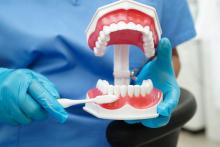
Aysar Nashef, Nayrouz Qahaz, Imad Abu El-Naaj: Systems genetics analysis of oral squamous cell carcinoma susceptibility using the mouse model: current position and new perspective (Mamm Genome .)
Oral squamous cell carcinoma (OSCC) is one of the most common human malignancies with complex etiology and poor prognosis. Although environmental carcinogens and carcinogenic viruses are still considered the main etiologic factors for OSCC development, genetic factors obviously play a key role in the initiation and progression of this neoplasm, given that not all individuals exposed to carcinogens develop the same severity of the disease, if any. ...
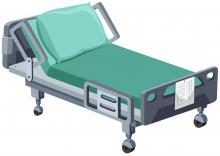
Adi Litmanovich, Dmitri Nordkin, Anna Vakarev, Igor Waksman: Hydrostatic anorectal injury caused by fall from jet-ski (BMJ Case Rep .)
A 14-year-old girl, a rear seat passenger on a jet-ski not wearing suitable protective gear, was 'jumping' waves at a low velocity when she was ejected backwards off the vehicle, suffering a complex and unusual hydrostatic perineal injury as a result of the high-pressure water stream propelling the jet-ski. She presented to the emergency room with rectal bleeding and perineal and abdominal pain....
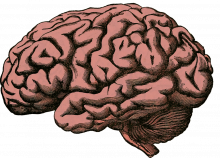
Khalaf Kridin: The burden of neurological comorbidities in six autoimmune bullous diseases: A population-based study (J Eur Acad Dermatol Venereol .)
Apart from bullous pemphigoid (BP), the association of other autoimmune bullous diseases (AIBDs) with neurological conditions is poorly understood. Objective: To estimate the association between a wide array of AIBDs and neurological conditions.
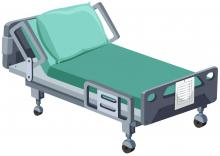
Tomer Meirson: Immunotherapy Discontinuation in Metastatic Melanoma: Lessons from Real-Life Clinical Experience (Cancers (Basel) . )
Immunotherapy has revolutionized outcomes for melanoma patients, by significantly prolonging survival and probably even curing a fraction of metastatic patients. In daily practice, treatment for responding patients is often discontinued due to treatment-limiting toxicity, or electively, following a major tumor response. To date, the criteria for a safe stop and the optimal duration of treatment remain unclear.
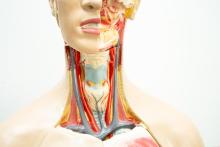
Sivan Saraph, Hector Cohen, Ohad Ronen: Effect of needle gauge on thyroid FNA diagnostic rate (Endocrine . )
Thyroid Bethesda classification system provides 6 diagnostic categories, the first being a sample deemed non-diagnostic or insufficient and requiring a subsequent second biopsy. Our objective was to evaluate differences in non-diagnostic fine needle aspiration (FNA) of thyroid nodules conducted with a 23-gauge(G) needle vs. those conducted with a 25 G needle.

Omry Koren: Microbiome Preprocessing Machine Learning Pipeline (Front Immunol .)
16S sequencing results are often used for Machine Learning (ML) tasks. 16S gene sequences are represented as feature counts, which are associated with taxonomic representation. Raw feature counts may not be the optimal representation for ML. We checked multiple preprocessing steps and tested the optimal combination for 16S sequencing-based classification tasks. We computed the contribution of each step to the accuracy as measured by the Area Under Curve (AUC) of the classification.



